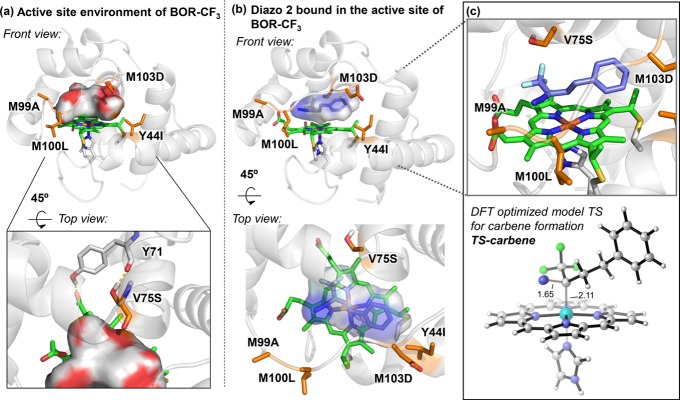Figure 4.
(a) The hydrogen bonding interactions between 75S and 71Y amide backbone and the empty surface area in a representative snapshot obtained from MD trajectories of BOR-CF3 in the absence of diazo compound (see also Figures S1 and S2 in the Supporting Information). (b) Binding pose of diazo substrate 2 bound into the active site of BOR-CF3, obtained from docking and constrained MD simulations (see Figure S3 and computational details in the SI). Direct comparison between the shape of the BOR-CF3 active site and the docked diazo 2 shows the high complementarity achieved by evolution and introduction of V75S mutation. (c) Comparison of diazo 2 bound in the BOR-CF3 structure and the DFT-optimized model transition state (TS) geometry for formation of the iron porphyrin carbene (IPC) intermediate (see the SI, Figure S8). The diazo 2 in this binding pose represents a near attack conformation that leads to the transition state for the generation of the iron porphyrin carbene intermediate.

